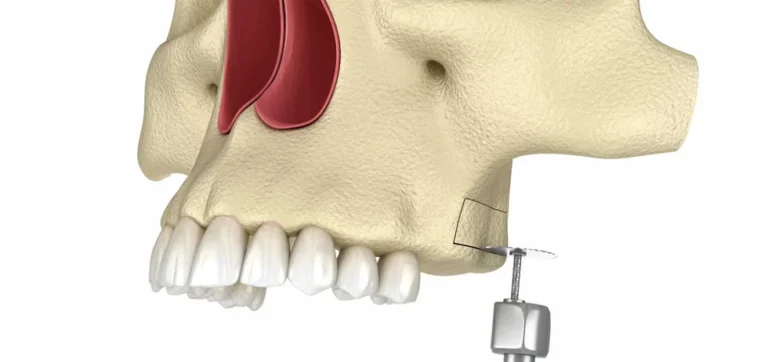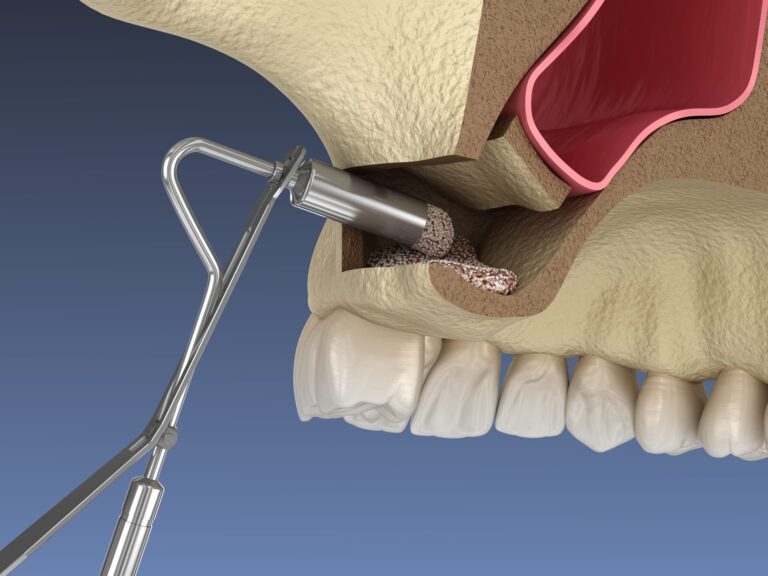You need implants, but there's no bone? A maxillofacial surgeon is all you need!
Sinus lift, also known as open sinus lift, is a surgical procedure that allows increasing the amount of bone in the posterior area of the upper jaw, in the maxillary sinus region. This procedure is required when the natural bone height of the patient is insufficient to support a dental implant.

For all these reasons, as with any surgical treatment, the decision on the type of surgical treatment or implant type is a well-considered decision by the trusted and experienced oral surgeon who will perform the treatment.
Sinus lift surgery is a highly complex surgical procedure that carries many complexities and risks. However, when performed by an experienced oral and maxillofacial surgeon, this procedure can be carried out smoothly without unnecessary complications and risks. With 23 years of experience in oral and maxillofacial surgery, Dr. Belal is the right person to trust in this intricate process, ensuring a successful and safe experience.
Do not rush to undergo the treatment by less skilled hands, and do not let fears prevent you from being able to receive implants and enjoy a fully functional upper jaw. We are here to help.

Sinus lift is a highly specialized and complex surgical procedure with its own potential complications and risks. These risks include the danger of infections, tears in the sinus membrane, and the risk of “fistula,” a connection between the oral cavity and the sinuses, allowing fluid to pass from the mouth to the sinuses during eating and drinking.
Oral and maxillofacial surgeons undergo extensive 5-year specialization programs and receive official approvals from the Ministry of Health. Their profound understanding of the anatomy of the mouth and sinuses uniquely equips them to handle the complexities of sinus lifts.
Selecting an experienced oral and maxillofacial surgeon ensures the success of the treatment without unnecessary complications and risks.
Beyond the surgical procedure of sinus lift and bone grafting, a skilled oral and maxillofacial surgeon supervises every stage of the healing process to ensure that each step, from preparation to post-operative care, is tailored to the unique case of each patient.
Each patient has unique needs and conditions, and an oral and maxillofacial surgeon can assess the situation correctly and provide the most efficient and tailored treatment solutions.
An oral and maxillofacial surgeon can perform the surgical procedure perfectly with minimal discomfort for the patient. They know how to handle any possible complications during treatment and can provide the correct surgical solutions to ensure optimal treatment outcomes.
An oral and maxillofacial surgeon is the most capable physician to efficiently and successfully handle any unexpected complications that may arise during or after treatment, while ensuring optimal results.
With extensive experience in oral and maxillofacial surgery, choosing an expert guarantees a well-informed decision for your oral health. Selecting a highly experienced surgeon ensures the best possible outcome for you. From the initial assessment to post-operative care, treatment by an oral and maxillofacial surgeon makes all the difference.